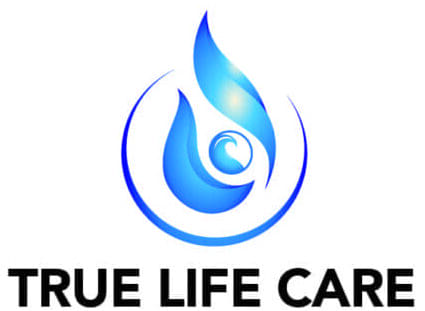Choosing The Best Art Therapy EMDR Treatment
What are art therapy EMDR treatment options? Learn about the relationship between art therapy and EMDR and how to get treatment at True Life Care. Please contact our admission office for more informations about our art therapy EMDR treatment in New Jersey.

Art Therapy EMDR Treatment
Art therapy and eye movement desensitization and reprocessing (EMDR) have both emerged as powerful tools for healing and growth. Discovering the best art therapy EMDR treatment options can help you get the help you need to treat any symptoms you may have.
What is Art Therapy?
Art therapy is a type of therapy that involves using art materials and creative processes. It is used to help individuals explore and express emotions, experiences, and thoughts.
Art therapy can be used to treat a wide range of mental health conditions, including:1
- Depression
- Anxiety
- Trauma
- Addiction
What Happens During Art Therapy EMDR Sessions?
- Paint
- Markers
- Clay or collage materials
The art-making process in art therapy is more important than the final product. The therapist may ask clients to reflect on their artwork.
They will discuss what it represents and explore the emotions and experiences that come up for them. This helps them gain insight into their thoughts and feelings and develop new coping strategies.
How Are Art Therapy EMDR Sessions Beneficial?
Art therapy can be beneficial for individuals who struggle to express themselves verbally. It is also helpful if they have experienced trauma or other difficult experiences, which is where EMDR can help too.
These experiences are often challenging to put into words. It can also be a valuable complement to other forms of therapy. Some include talk therapy or cognitive-behavioral therapy.2
Reputable rehab centers offer art therapy EMDR as part of their treatment programs alongside other evidence-based therapies. This helps clients achieve their mental health treatment goals and promote long-term recovery.
How Does Art Therapy EMDR Differ From Other Forms of Therapy?
- Art therapy is a form of expressive therapy. It uses art materials and creative processes as a means of communication. Meanwhile, other forms of therapy primarily rely on verbal communication.
- Art therapy encourages clients to tap into their creativity and imagination. It provides a unique opportunity to express themselves. They do so in ways that may be difficult to put into words, which is what other talk therapies mainly utilize.
- Art therapy is a non-judgmental process. It focuses on the creative process rather than the final product. This can be helpful for individuals who struggle with perfectionism or self-criticism.
- Art therapy EMDR is particularly effective for individuals with difficulty expressing themselves verbally. It helps those with autism or developmental disabilities.
Why is Art Therapy an Effective Treatment Opportunity?
What Is EMDR?
It treats post-traumatic stress disorder (PTSD). It has since been used to treat various mental health conditions. Some include anxiety, depression, and addiction.3
What to Expect During EMDR
- Eye movements
- Auditory tones
- Tactile sensations
During this stimulation, the individual recalls traumatic memories or experiences. The therapist guides the client through a structured protocol.
It often involves focusing on the traumatic memory or experience while attending to external bilateral stimulation.
How Does EMDR Work?
Role of a Therapist During EMDR
Why is EMDR an Effective Treatment Opportunity?
EMDR is an effective treatment for trauma-related disorders and other mental health conditions. It is often used with other forms of therapy, like cognitive-behavioral therapy and art therapy.
It can particularly benefit individuals with difficulty processing and integrating traumatic memories.
How Are Art Therapy and EMDR Used Together To Treat Mental Health Conditions?
Art therapy EMDR is used in a holistic approach to mental health treatment. Art therapy helps individuals explore their emotions, memories, and experiences through creative expression.
Meanwhile, EMDR helps individuals process traumatic or distressing memories and experiences.4
What Happens During Art Therapy EMDR Sessions?
What Types of Mental Health Conditions Can be Treated With Art Therapy and EMDR?
Post-Traumatic Stress Disorder (PTSD)
Anxiety Disorders
Art therapy EMDR can effectively treat various anxiety disorders, such as generalized anxiety disorder, panic disorder, and social anxiety disorder.
Depression
Art therapy can be a valuable adjunct to traditional talk therapy in treating depression. Art therapy can help individuals to express their emotions in a nonverbal way.
This can be particularly helpful for those who have difficulty verbalizing their feelings.7
Substance Use Disorders
Eating Disorders
Art therapy can also be helpful in the treatment of eating disorders. They allow individuals to explore their relationship with food and body image through creative expression.
EMDR can also effectively treat underlying emotional issues that may have contributed to the development of an eating disorder.
Traumatic Brain Injury (TBI)
Art therapy EMDR can be a valuable tool for rehabilitating TBI patients. It does so by promoting cognitive and emotional processing.
How Does Art Therapy Support the EMDR Process?
How Art Therapy Can Provide a Space for Healing
What Role Does Creativity Play in the Therapy Sessions?
Additionally, creativity can play an essential role in the therapy sessions themselves. Art therapy provides a safe space for patients to explore their creativity and imagination.
They explore aspects of themselves that may be difficult to access through traditional talk therapy alone.
Art Therapy Activities
What Should Someone Expect During an Art Therapy EMDR Session?
During an art therapy EMDR session, the therapist will typically begin by assessing the client’s needs. They will establish goals for the session. The therapist may also discuss the client’s history and current mental health concerns.
What Happens at the End of the Session?
What Are The Benefits Of Combining Art Therapy And EMDR?
Enhances Self-Expression
Art therapy provides a nonverbal form of expression that allows clients to communicate their feelings. This can help individuals who struggle with verbal expression.
By incorporating art therapy EMDR, clients are given a safe and creative space to express themselves.
Provides a Sense of Safety
EMDR can be an intense and emotionally challenging process, especially when working through trauma.
Art therapy can provide a sense of safety and grounding. It makes it easier for clients to tolerate and process difficult emotions and memories.
Enhances the Effectiveness of EMDR
Encourages Creativity and Imagination
How Can True Life Care Mental Health Help?

Art Therapy EMDR at True Life Care
How Else Can We Help?
- Cognitive-behavioral therapy (CBT)
- Dialectical behavior therapy (DBT)
- Mindfulness-based therapy
- Medication-assisted treatment (MAT)
- Holistic treatment
Reach Out to True Life Care Today and Begin Healing
Overall, we are committed to providing our clients the highest quality of care and support as they navigate their journey toward healing and recovery. Don’t hesitate to reach out today. Please contact our admission office for more informations about our art therapy EMDR treatment in New Jersey.
Resources
- https://pubmed.ncbi.nlm.nih.gov/34456801/
- https://pubmed.ncbi.nlm.nih.gov/25478139/
- https://pubmed.ncbi.nlm.nih.gov/29928250
- https://pubmed.ncbi.nlm.nih.gov/30111254/
- https://pubmed.ncbi.nlm.nih.gov/29928250/
- https://pubmed.ncbi.nlm.nih.gov/32058073/
- https://pubmed.ncbi.nlm.nih.gov/32043428/
- https://pubmed.ncbi.nlm.nih.gov/28302084/
- https://pubmed.ncbi.nlm.nih.gov/29708025/



